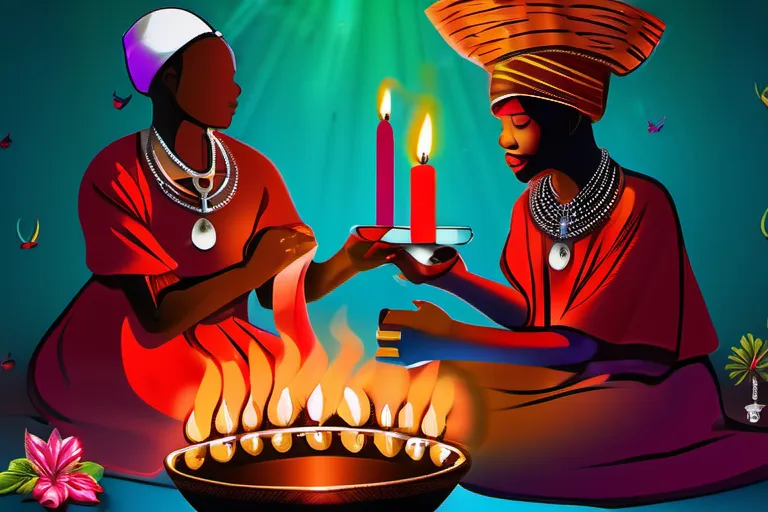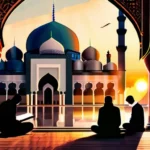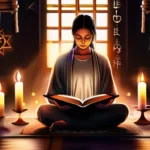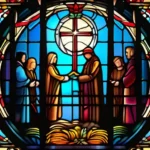Explore the rich history, beliefs, and rituals of Vodou and its impact on contemporary religious practices.
Vodou, also known as Voodoo, is a complex and fascinating religion with deep roots in Africa and the Caribbean. In this article, we delve into the ways that Vodou has influenced modern religious practices around the world.
The Origins of Vodou
How did Vodou originate, and how has it shaped modern religious practices? To understand its influence, we must first delve into its rich history, tracing its roots back to the ancient African traditions that were brought over during the harsh conditions of slavery. Imagine these traditions as seeds, carried across continents by those seeking solace amidst the turmoil of their lives.
The story of Vodou is one of resilience and survival. Think about how these seeds grew in the fertile soil of the Caribbean, where they merged with indigenous beliefs to form a new religious landscape. As the years passed, Vodou continued to evolve, adapting to the changing social and political climates. How did this adaptive nature allow it to persist and thrive?
During the colonial era, Vodou faced numerous challenges, including persecution and attempts by colonizers to suppress its practices. Yet, despite these adversities, Vodou adapted and found ways to resist and preserve its core beliefs. Could the adaptability of Vodou be seen as a metaphor for human resilience in the face of oppression?
In contemporary times, Vodou’s influence can be seen in various forms of modern religious practices around the world. From the sacred ceremonies that continue to honor ancestral spirits, to the spiritual guidance provided by loa, or deities, in personal and community life, Vodou remains a vibrant and integral part of many lives. How do you think these practices have evolved over time, and what role do they play in modern society?
Vodou’s impact on religious practices extends beyond its immediate followers. Its principles of interconnectedness, respect for nature, and the belief in multiple spiritual realms can be seen as influential elements shaping broader discussions about spirituality and religion today. Can you see how Vodou’s rich history and beliefs have left an indelible mark on modern religious thought?
Beliefs and Practices in Vodou
Imagine stepping into a vibrant, colorful ceremony where ancient spirits and modern souls intertwine. This is Vodou, a religion deeply rooted in history but alive and well today. How does this complex web of beliefs and practices influence our understanding of religion? Let’s dive into the heart of Vodou’s core beliefs and rituals.
At the center of Vodou lies the concept of loas (also spelled lwa or loa). These are deities who embody various aspects of life, from love to war, joy to sorrow. They are not distant gods but active forces in everyday life, much like the spirits that walk among us. Each loa has its own unique personality and energy, making Vodou a dynamic and personal religion.
Offerings play a crucial role in maintaining a relationship with these loas. From libations of alcohol to offerings of food, these gifts are seen as a form of communication and respect. Imagine pouring a cup of rum onto the ground during a ceremony; it’s not just an act but a heartfelt invocation, seeking the favor or guidance of a specific loa. These rituals create a tangible link between the earthly and spiritual realms.
Rituals in Vodou are rich with symbolism and emotion. They often involve music, dance, and possession ceremonies where participants may enter into a trance-like state, allowing spirits to possess them temporarily. This is not just a performance; it’s a profound experience that can be both exhilarating and deeply moving. How does this practice challenge or enhance our understanding of religious experiences?
Vodou offers us a lens through which to explore the fluidity of spiritual practices in a modern world. It invites us to question traditional boundaries between the sacred and profane, the past and present. As we delve deeper into Vodou’s beliefs and rituals, we uncover a vibrant tapestry of tradition and innovation that continues to influence contemporary religious practices globally.
The Spread of Vodou Around the World
How has Vodou, once confined to its roots in Haiti and the Caribbean, managed to spread its influence across the globe? It’s as if a seed, nourished by centuries of spiritual heritage, decided to take flight, spreading its wings and touching the hearts of people far beyond its native lands.
From the bustling streets of New Orleans to the vibrant cities of Brazil, Vodou has found a home. In many places, it’s not just a religion but a way of life, influencing modern religious practices in profound ways. Could this be due to the universal appeal of its rich symbolism and deep spiritual connection? Or perhaps it lies in the adaptability of its rituals and beliefs, making them resonate with people from diverse backgrounds?
Consider how Vodou has inspired the concept of ancestral veneration. In many cultures influenced by Vodou, there’s a strong emphasis on honoring one’s ancestors. This practice isn’t just about remembering the past; it’s about connecting the present with the future, bridging generations through shared experiences and wisdom.
The blending of Vodou with other religions is another intriguing aspect. Syncretism has allowed Vodou to thrive in new environments, adapting to local traditions while maintaining its core principles. This adaptability has made it a powerful force in the global religious landscape, encouraging people to explore and integrate different spiritual practices.
As we delve deeper into how Vodou influences modern religious practices, we see that it’s more than just a religion—it’s a cultural touchstone. It offers comfort, guidance, and a sense of community in an increasingly fragmented world. Could this be the key to its widespread appeal? By embracing Vodou’s teachings, people find not only spiritual solace but also a powerful tool for social cohesion and personal growth.
As we explore further into how Vodou has spread around the world, it becomes clear that its influence is far-reaching. It’s like a river, constantly flowing and adapting to new terrain, yet always carrying with it the essence of its origins. This chapter will serve as a gateway to understanding the impact Vodou has had on contemporary religious practices worldwide, setting the stage for our exploration into syncretism in the next section.
Vodou and Syncretism
How does Vodou blend seamlessly into the fabric of modern religious practices, much like a vibrant thread weaving through a tapestry? The phenomenon known as syncretism has played a significant role in this process. Syncretism is the blending or mingling of different beliefs and practices, often seen when religions encounter each other in various regions. In the case of Vodou, it’s fascinating to explore how its rich history, beliefs, and rituals have intertwined with other religious traditions, creating a unique form of contemporary spirituality.
Take for example, the Haitian Vodou tradition that emerged after the French colonial period. The enslaved people in Haiti blended their African spiritual practices with Catholicism, which was forced upon them by their European oppressors. This blending wasn’t just a casual mix; it was a deliberate and profound synthesis that allowed the oppressed to retain their cultural identity and spiritual heritage. Think of it like mixing two different paints on a canvas—neither hue is lost, but they create something entirely new.
Similarly, in Brazil, we see Vodou syncretized with Catholicism in the form of Candomblé and Umbanda. In these religions, deities from the Yoruba pantheon are often identified with Christian saints, creating a harmonious blend that resonates deeply within the hearts of practitioners. It’s as if the saints themselves have become local heroes, embodying both divine attributes and human struggles.
These syncretic practices are not just about combining traditions; they’re about empowering individuals to find meaning in their spiritual journeys. By merging Vodou with other religious beliefs, people create a personalized form of worship that reflects their own experiences and cultural background. It’s like creating a unique recipe by combining flavors from different cuisines—each ingredient brings something new to the pot.
Today, syncretism continues to shape modern religious practices around the world. In many cases, it serves as a bridge between diverse communities, fostering understanding and mutual respect. As Vodou spreads beyond its traditional home in Haiti, we see this blending of beliefs and rituals continuing to evolve, adapting to new environments while preserving its core essence.
So, how does syncretism shape our modern spiritual landscape? It transforms religious practices into vibrant tapestries that reflect the rich diversity of human experience. Vodou’s journey through syncretism is a testament to the resilience and adaptability of spirituality in the face of historical challenges and cultural encounters.
Controversies and Misconceptions Surrounding Vodou
How Vodou Influences Modern Religious Practices: A Comprehensive Guide
Have you ever wondered how the ancient rituals and beliefs of Vodou continue to influence modern religious practices? In this chapter, we will delve into the controversies and misconceptions surrounding Vodou, exploring why it remains a complex and often misunderstood religion in today’s world. Many people have heard whispers about Vodou, but what exactly is it?
Is Vodou just a cult as some might claim? Is it really full of dark magic and voodoo dolls, or does it hold deep spiritual truths that resonate with many individuals seeking connection to something greater than themselves? The truth lies somewhere in between these extremes. Vodou is both a rich tapestry of historical and cultural practices and a living, breathing faith that continues to evolve.
One common misconception about Vodou is the idea that it promotes witchcraft or black magic. While some practitioners do engage in traditional rituals involving herbs and spirits, the core belief system focuses on honoring ancestors and deities who can provide guidance, protection, and blessings. It’s a religion deeply rooted in community and spirituality.
The controversies surrounding Vodou often stem from media portrayals that sensationalize its practices. However, it’s crucial to understand that these representations often serve more as entertainment than accurate depictions of the religion. For example, the portrayal of voodoo dolls as instruments of harm is a misunderstanding; in reality, they are symbols used for positive intentions like healing and success.
Another significant controversy involves the perception of Vodou as a threat to Western religious norms. Some view it as a foreign invasion that challenges established beliefs. Yet, Vodou’s true essence lies in its ability to integrate diverse cultural elements, making it a vibrant and inclusive spiritual practice rather than a monolithic force.
As we explore these controversies and misconceptions, it becomes clear that Vodou is more than just an old-fashioned religion—it’s a dynamic entity that continues to inspire and shape modern religious practices. Its influence can be seen in the way people seek to connect with their spiritual roots, honor ancestral wisdom, and find meaning in a complex world.
The Future of Vodou
How does Vodou, born from the depths of African traditions and enslaved souls, find its place in the ever-evolving landscape of global religions? The future of Vodou is a tapestry woven with threads of resilience, adaptation, and innovation. As the world speeds forward, can this ancient practice continue to thrive or will it fade into obscurity?
Imagine Vodou as a river, its waters carrying the spirits of ancestors and the whispers of deities across time. In a world where technology and modernity often overshadow traditional practices, how does Vodou navigate this shifting terrain? Will it remain a quaint relic of a bygone era or transform into something entirely new yet deeply familiar?
One can hardly ignore the potential for growth in urban centers where globalization meets cultural exchange. In cities like New York and Paris, Vodou temples are sprouting up, blending traditional rituals with contemporary aesthetics. These spaces serve not just as places of worship but also as hubs for community building and cultural preservation.
Moreover, the digital age offers a new frontier for Vodou to expand its reach. Virtual ceremonies and online communities can connect practitioners across continents, bridging geographical divides and fostering a global sense of unity among followers. This digital expansion could make Vodou more accessible and inclusive, inviting new members from diverse backgrounds.
But the future also brings challenges. As Vodou seeks to modernize, it must strike a balance between tradition and innovation. How can rituals be adapted for younger generations without losing their essence? Can the spiritual practices of Vodou find common ground with scientific skepticism and secular society?
The answer lies in the very nature of Vodou itself—a religion that thrives on adaptation and reinvention. As it continues to evolve, Vodou may emerge not just as a religious practice but as a powerful symbol of cultural resistance and resilience. Will you be part of this vibrant future, embracing the unknown paths that lie ahead?
Conclusion
 By understanding the unique beliefs and rituals of Vodou, we can gain valuable insights into the rich tapestry of human spirituality and the enduring power of tradition.
By understanding the unique beliefs and rituals of Vodou, we can gain valuable insights into the rich tapestry of human spirituality and the enduring power of tradition.











